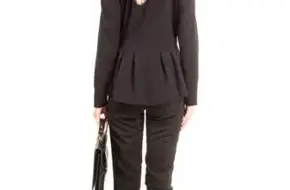-
What are the current entry requirements for Beijing? Traveling to Beijing, China’s capital, involves understanding its entry rules. As of 2023, most foreign travelers need a visa, but citizens from 144 countries can visit visa-free for 15–30 days (check your country’s allowance). A valid passport (with at least 6 months validity) is mandatory. Additionally, China has dropped pre-arrival COVID-19 testing, but health monitoring remains. Upon arrival, you’ll complete a digital health declaration via the China Customs app or website. This includes basic info like your itinerary and health status.
How does the entry process work at Beijing’s airports?
Landing at Beijing Capital International Airport (PEK) or Daxing Airport (PKX), proceed to immigration with your passport, visa (if needed), and health declaration. Officials may ask about your stay details. After baggage claim, exit through customs. If selected, declare goods exceeding duty-free limits (e.g., tobacco, alcohol). For smooth entry, keep your health declaration QR code ready—it’s scanned at checkpoints.
What should I pack for a trip to Beijing?
Beijing’s weather varies by season. In spring/autumn, layer with a light jacket. Summers are hot and humid—pack breathable clothes and sunscreen. Winters demand heavy coats, gloves, and thermals. Bring a universal power adapter (Type A/C sockets). For temple visits, carry modest clothing (cover shoulders/knees). Don’t forget a reusable mask for smoggy days and a portable charger for navigating the city!
Which attractions should be on my Beijing itinerary?
Start with the Great Wall (sections like Mutianyu or Jinshanling are less crowded). The Forbidden City and Temple of Heaven offer deep history. For culture, explore Hutongs (narrow alleys) by bike or rickshaw. Don’t miss Tiananmen Square, Summer Palace, and the modern 798 Art District. For a unique experience, book a Peking Duck dinner at a historic restaurant like Quanjude. Pro tip: Buy tickets online to skip long lines!
How can I stay connected and navigate Beijing?
Get a SIM card or portable Wi-Fi device for internet access. Apps like WeChat (for payments) and DiDi (ride-hailing) are essential. The metro is cheap and efficient—download the Beijing Subway app for English routes. Taxis are affordable too, but ensure the meter is used. For landmarks, use Google Maps offline feature (save maps in advance).
Visa-Free Entry Countries (as of 2023):
Country Visa-Free Days USA 120 Canada 180 UK 180 Australia 72 New Zealand 72 EU Countries 180 Note: Confirm latest policies via your nearest Chinese consulate.
Health & Safety Tips:
- Drink bottled water.
- Use trusted taxis (apps like Didi are safest).
- Avoid unauthorized tours—book via licensed agencies.
Beijing blends ancient wonders with modern energy. Plan ahead, respect local customs, and you’ll discover why it’s one of the world’s most iconic cities!

